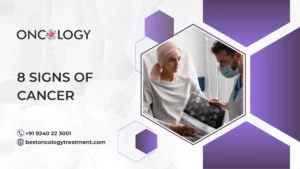Chemotherapy is one of the most effective treatments against cancer, but it often brings visible side effects like hair loss something many patients find emotionally challenging. One of the most common questions asked during recovery is, when does hair grow back after chemo? Understanding when hair grows back after chemo, what influences its return, and how to care for it along the way can help you regain confidence and hope as you move toward full recovery.
What Causes Chemotherapy Hair Loss?
Chemotherapy and hair loss are closely connected because chemo drugs target fast-growing cells. While this is essential for destroying cancer cells, it also affects other rapidly dividing cells in the body including those in your hair follicles. As a result, many patients notice their hair beginning to thin or fall out within a few weeks of starting treatment.
During chemotherapy, the follicles that produce hair enter a resting phase, which halts new growth and causes existing strands to shed. The severity of this hair loss depends on the type of chemotherapy used, the dosage, and individual body response. Some people may experience only mild thinning, while others lose hair completely from their scalp, eyebrows, and even eyelashes.
Key Insights:
- Timing: Hair usually starts falling out 1–3 weeks after the first chemo session.
- Extent: Not all chemo drugs cause total hair loss some only lead to partial shedding.
- Area Affected: Hair loss can occur on the scalp, face, arms, and other body parts.
- Hope: This change is temporary once treatment ends, the follicles begin to recover, starting the natural stages of hair growth after chemotherapy.
How Long Does It Take for Hair to Grow Back After Treatment?
Many patients eagerly ask, “When does hair grow back after chemo?” once their final treatment session ends. While the timeline can differ from person to person, most people begin to see soft, thin hair emerging 2 to 4 weeks after chemotherapy stops. This early regrowth often appears as fine fuzz, signaling that the scalp and follicles are starting to recover.
In general, full hair growth can take 6 months to a year, depending on overall mental health and cancer, and how the body responds to recovery. The stages of hair growth after chemotherapy often begin slowly, with noticeable improvements over time as the follicles strengthen and normalize.
Typical Hair Growth Timeline After Chemotherapy
- 2–4 Weeks Post-Treatment: Tiny, soft strands start to appear.
- 1–2 Months: The scalp shows more visible regrowth.
- 3–6 Months: Hair becomes thicker and stronger, often reaching a short style length.
- 6–12 Months: Many people regain full coverage, though texture or color changes are common.
Good nutrition, hydration, and gentle care can positively influence hair growth treatment after chemotherapy, helping the process along naturally. Although it may seem slow, every small strand is proof that your body is healing.
Will My Hair Grow Back Differently?
Many people are surprised by the way their hair looks once it starts returning, and it’s completely natural to ask, “Will my hair grow back differently after chemo?” The truth is, yes sometimes it does. As your body heals, your follicles regenerate, and this renewal can bring subtle or noticeable changes in your hair’s texture, color, or thickness.
When thinking about when does hair grow back after chemo?, it’s important to understand that hair regrowth is a sign of recovery, even if it doesn’t look exactly the same as before. Chemotherapy and hair loss affect the follicles deeply, and when they heal, they may produce hair with a different structure.
Common Changes in Hair After Chemotherapy
- Texture Shifts: Straight hair may grow back curly or wavy often referred to as chemo curls. These curls might soften over time as the follicles stabilize.
- Color Variations: Your hair may return lighter, darker, or even gray, regardless of what it was before treatment. This change happens because pigment cells in the follicles can be temporarily altered.
- Thickness Differences: Some patients find their hair comes back finer or thicker than before, depending on how quickly the follicles recover.
- Growth Pattern Adjustments: In rare cases, growth may be uneven at first, but it usually evens out within several months.
These changes are part of the stages of hair growth after chemotherapy a visible reminder that your body is rebuilding. Over time, many people notice their hair gradually returns to its pre-treatment texture and color. So, when does hair grow back after chemo? The answer is not only does it grow back, but it often comes back with character, symbolizing strength, survival, and renewal.
Can I Speed Up Hair Regrowth?
It’s completely natural to want your hair to return as quickly as possible after chemotherapy. Many survivors ask, Can I do anything to speed up hair regrowth? While there’s no instant cure, you can absolutely support your scalp and promote stronger, healthier hair over time. Understanding when does hair grow back after chemo? helps set expectations and these methods can make that process smoother and more effective.
Practical Ways to Encourage Faster Hair Growth
- Maintain a Nutrient-Rich Diet: Foods rich in biotin, iron, zinc, and omega-3 fatty acids can strengthen follicles and boost regrowth. Think leafy greens, eggs, nuts, rich nutrients Fruit , and fish these promote healthy hair from the inside out.
- Massage Your Scalp Regularly: Gentle massages improve blood circulation, nourishing your scalp and stimulating new follicle activity. This small daily habit can significantly enhance the natural stages of hair growth after chemotherapy.
- Stay Hydrated and Rested: Adequate water intake and proper sleep help your body recover faster, improving overall hair health. Healing from chemo takes time, and internal recovery plays a key role in hair regrowth.
- Use Gentle Hair Products: Avoid harsh shampoos, chemicals, or heat styling tools. Instead, opt for sulfate-free, mild formulas that protect fragile new strands.
- Consider Hair Growth Treatments After Chemotherapy: Some people explore doctor-approved solutions like topical Minoxidil or natural oils (castor, rosemary, coconut). Always consult your doctor before starting any hair growth treatment after chemotherapy to ensure it’s safe for your recovery stage.
Can Medicine Help Regrow Hair After Chemotherapy?
Some people explore medical options to encourage faster hair regrowth. While results vary, certain treatments may be helpful.
Possible treatments:
- Minoxidil (Rogaine): May support hair regrowth when applied to the scalp.
- Scalp Cooling Caps: Worn during chemo to reduce hair loss.
- Supplements: Biotin, Iron, and Omega-3 may support growth (talk to your doctor).
Always speak with your healthcare provider before trying new treatments. Some medicines may interfere with recovery or ongoing cancer care.
Key Points:
- Medicine can help but isn’t a quick fix.
- Professional advice is a must.
- Focus on whole-body healing.
What is the Best Way to Care for Hair During Chemotherapy?
Caring for your hair and scalp during chemotherapy treatment is essential, even if you know hair loss may occur. Gentle maintenance can make your scalp healthier and encourage smoother regrowth later. Many patients who ask, when does hair grow back after chemo? also want to know how to protect their scalp during treatment because healthy care habits now lead to faster recovery later.
Essential Hair and Scalp Care Tips During Chemotherapy
- Be Gentle with Your Hair: Use a soft-bristle brush or wide-tooth comb to reduce breakage. Avoid tight hairstyles like ponytails or braids that can pull on fragile strands.
- Choose Mild Hair Products: Opt for sulfate-free shampoos and natural conditioners. Harsh chemicals can irritate the scalp, delay follicle healing, and interfere with the early stages of hair growth after chemotherapy.
- Protect Your Scalp: As hair thins, your scalp becomes more sensitive to sun and cold. Wear hats, scarves, or soft caps for protection. This not only guards against UV rays but also keeps your scalp comfortable.
- Keep the Scalp Moisturized: Dryness and flaking are common during chemotherapy. Use light, fragrance-free moisturizers or natural oils (like coconut or olive oil) to soothe irritation and nourish the skin.
- Avoid Heat Styling: Skip blow dryers, straighteners, and curling irons. Excessive heat can weaken follicles already stressed by treatment.
- Maintain a Balanced Diet: Foods rich in protein, vitamins, and minerals strengthen your hair from within. Proper nutrition complements hair growth treatment after chemotherapy, helping your body rebuild faster.
Can Cold Caps Help with Chemotherapy Hair Loss?
Yes, cold caps can be a powerful ally for patients trying to reduce hair loss during treatment. When people ask, when does hair grow back after chemo?, the goal isn’t just to wait for regrowth but also to find ways to preserve as much hair as possible. That’s where scalp cooling, or cold cap therapy, comes in.
Cold caps are specially designed helmets filled with a cooling gel or connected to a cooling system. They work by lowering the scalp temperature during chemotherapy, which restricts blood flow to the hair follicles. This means fewer chemo drugs reach the follicles, helping to reduce the amount of hair lost.
How Cold Caps Help
- Protect Follicles During Treatment: Cooling slows down follicle activity, making them less likely to absorb chemotherapy drugs that cause hair loss.
- Support Early Stages of Regrowth: Even if hair shedding still happens, scalp cooling can make post-treatment recovery easier and faster.
- Boost Emotional Confidence: For many patients, retaining even part of their hair helps maintain a sense of normalcy during treatment.
Things to Keep in Mind
- Cold caps may not work for everyone; success depends on the chemotherapy type and dosage.
- The process can be uncomfortable since it involves wearing the cap for several hours before, during, and after each session.
- Always discuss with your oncologist before starting scalp cooling, as it’s not suitable for all treatment plans.
What are Some Ways to Hide Hair Loss During Chemotherapy?
Hair loss can deeply affect self-esteem, making many patients wonder not only when does hair grow back after chemo? but also how to feel comfortable and confident in the meantime. Thankfully, there are creative and practical ways to manage and style through this temporary phase of chemotherapy and hair loss, helping you embrace your journey with grace and confidence.
Comfortable and Stylish Ways to Cover Hair Loss
- Scarves and Headwraps: Lightweight scarves made of silk or cotton are gentle on sensitive scalps. You can experiment with colors and wrapping styles to match your personality or outfit turning your headwrap into a symbol of strength and style.
- Hats and Beanies: Soft, breathable caps keep your scalp warm and comfortable. Choose materials like bamboo or jersey fabric to avoid irritation. They’re practical for everyday use and protect your scalp from the sun or cold.
- Wigs and Hairpieces: High-quality synthetic or human-hair wigs can look incredibly natural. You can even match your pre-chemo hairstyle or try something completely new. Many patients find this an empowering way to express themselves while waiting for regrowth.
- Headbands and Turbans: These are great for partial hair loss or regrowth stages. They cover thinning areas and add a fashionable touch without needing full coverage.
- Makeup and Accessories: Some people use eyebrow pencils or false lashes to restore facial definition, balancing the effects of chemotherapy and hair loss. A pop of lipstick or statement earrings can also draw focus upward and highlight your features.
Donating Your Wig After Your Hair Grows Back
When your natural hair finally returns a moment many eagerly await after asking when does hair grow back after chemo? it often symbolizes recovery, resilience, and renewal. At this stage, you might find your wig sitting unused, reminding you of how far you’ve come. Donating it can turn your personal journey into a gift of hope for someone else beginning theirs.
Why Wig Donation Matters
- Helps Cancer Patients in Need: High-quality wigs can be expensive, and many individuals undergoing chemotherapy and hair loss can’t afford them. Donating your gently used wig can make a real difference in their emotional healing.
- Spreads Positivity and Support: Sharing your wig is more than a kind act it’s a symbol of solidarity, showing others they’re not alone in their fight.
- A Meaningful Closure: Donating can be a healing ritual that marks the end of your treatment phase and celebrates your new chapter of recovery.
Where to Donate Your Wig
You can contribute through nonprofit organizations and hospitals that specialize in wig donation programs, such as:
- Local cancer care centers and oncology hospitals
- Hair donation programs like Locks of Love, Pantene Beautiful Lengths, or Wigs for Kids
- Community cancer support groups that provide free wigs to patients
Before donating, ensure your wig is clean, well-maintained, and follows the guidelines of the organization.
Conclusion
Hair loss from chemotherapy is temporary and often the first visible sign of healing. Understanding when does hair grow back after chemo? and the connection between chemotherapy and hair loss brings comfort during recovery. Most people notice soft regrowth within 3 to 6 weeks after treatment, with thicker hair appearing over time. Changes in texture or color are common but usually fade as follicles recover. With proper scalp care, nutrition, and patience, healthy hair regrowth becomes smoother. Your new hair stands as a symbol of strength and resilience through chemotherapy and healing.
Read Also: Top 10 Causes of Cancer and Symptoms




